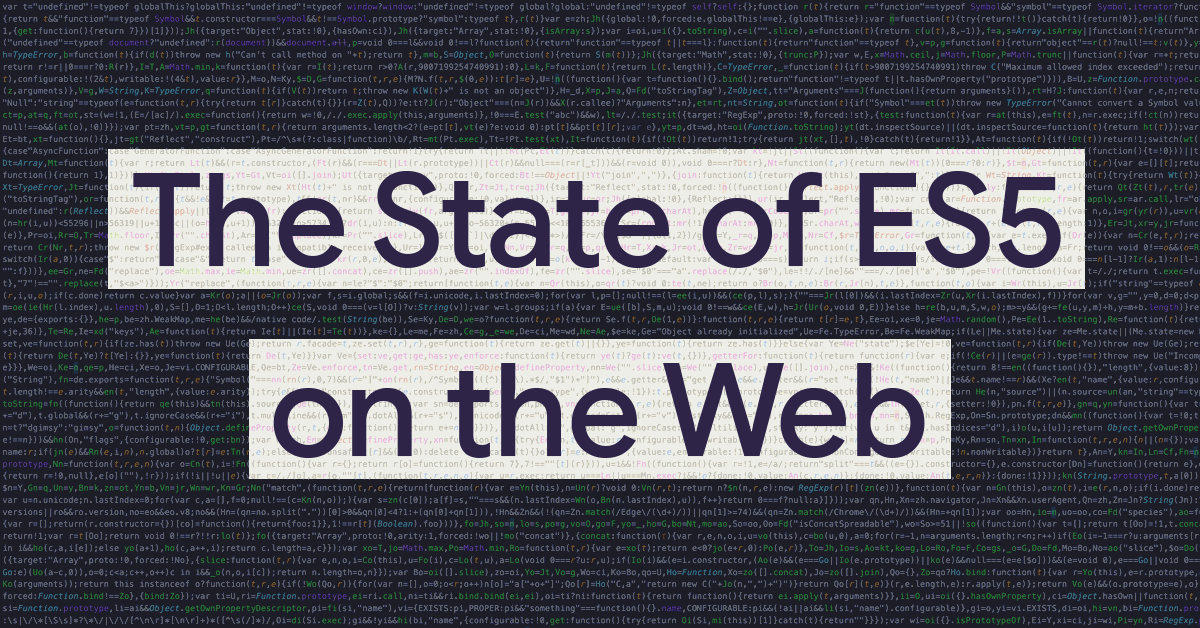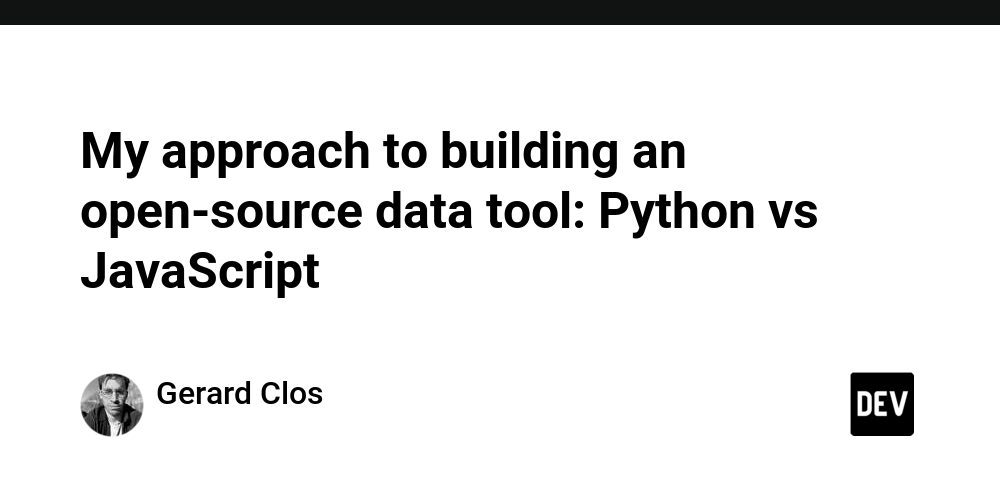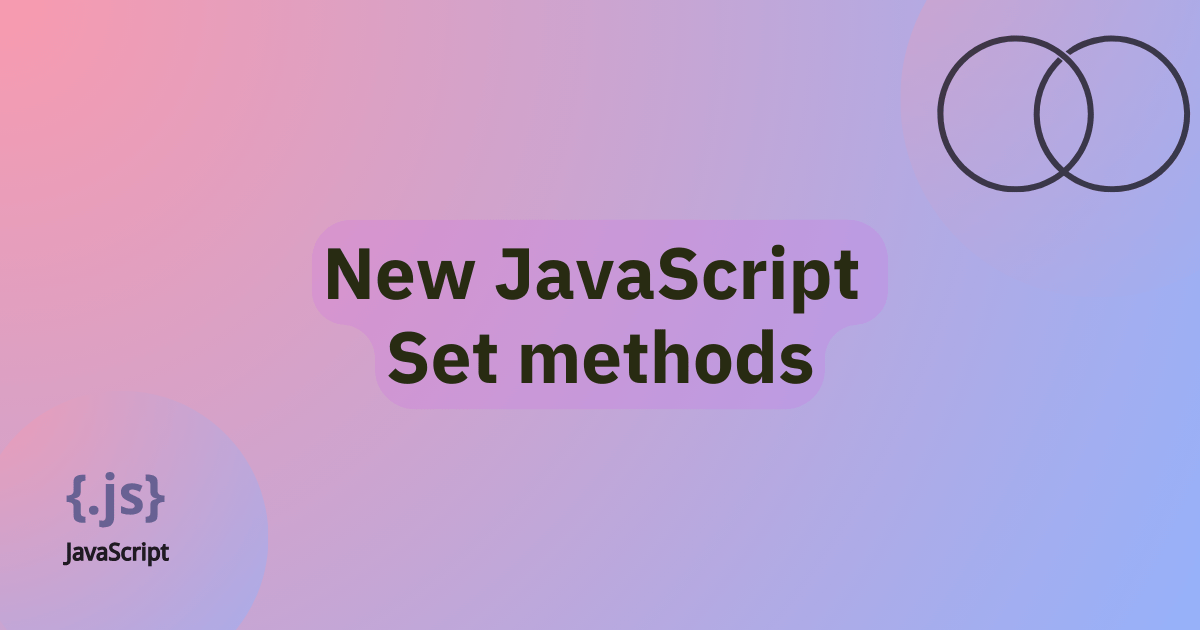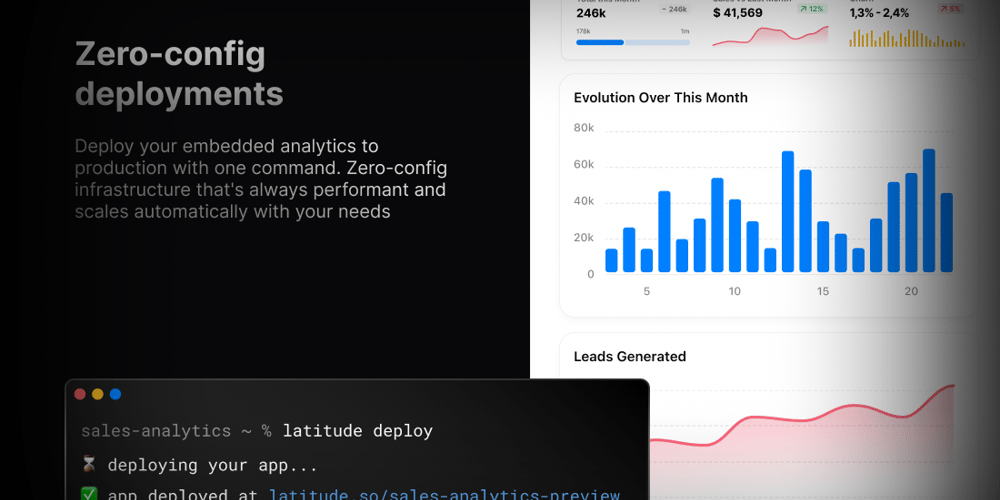JavaScript
Should I create functions/methods for packages/libraries that allow optional parameters to accept null? In this example below, I set the 3rd and 4th parameter as `null` which will act as the default value. ``` myLibrary.myFunction(1, 7, null, null, true); ``` Or is this not a good way to go about creating functions for a package and therefore should not accept `null` as a parameter value. ``` myLibrary.myFunction(1, 7, false, 4, true); ```
 philipwalton.com
philipwalton.com
TL;DR: - Many websites are (unintentionally) shipping ES6+ code in production. This indicates that transpiling to ES5 is outdated practice. - We need a better [baseline](https://web.dev/baseline) for transpilation, which should be a moving target. - We should transpile code in node_modules, at least for production.
In PHP ecosystem there is a tool called [Rector](https://getrector.com). It helps a lot in automated refactoring. It helps a lot in updating from a bad design pattern to another, update code to match a given framework updates, etc. Maybe we could create a similar tool for client side Javascript to migrate away from jQuery to vanilla Javascript. Websites youmightnotneedjquery.com have a good collections of vanilla JS alternatives to jQuery. While one could do it manually, on larger code bases, it is extremely tedious. Maybe such tool exists and I am unaware of it? At first, I thought about having such transformation as an optimization step in the bundler, but this is unnecessarily redundant and might cause a lot of troubles.
 positive-intentions.com
positive-intentions.com
https://positive-intentions.com/blog/qr-codes-as-a%20data-channel QR Codes as a Data Channel the demo in the blog article is a bit cluncky. here is a better link for it: https://chat.positive-intentions.com/#/qr
 positive-intentions.com
positive-intentions.com
Functional Web Components https://positive-intentions.com/blog/dim-todo-list Github: https://github.com/positive-intentions/dim Demo: https://dim.positive-intentions.com
[@javascript](https://programming.dev/c/javascript) [@programming@beehaw.org](https://beehaw.org/c/programming) [@programming@programming.dev](https://programming.dev/c/programming) Functional Web Components [https://positive-intentions.com/blog/dim-todo-list](https://positive-intentions.com/blog/dim-todo-list)
https://positive-intentions.com/blog/dim-functional-webcomponents/ im investigating an idea i have about functional webcomponents after some experience with Lit. Lit is a nice lightweight UI framework, but i didnt like that it was using class-based components. Vue has a nice approach but i like working with the syntax that React used and i wondered if with webcomponents i could create a functional UI framework that didnt need to be transpiled. i think the article is already quite long, so i think i will create a separate one as a tutorial for it. note: im not trying to push "yet another ui framework", this is an investigation to see what is possible. this article is intended as educational.
 biomejs.dev
biomejs.dev
**Biome v1.9 is out!** Today we celebrate both the first anniversary of Biome 🎊 and the release of Biome v1.9! Read our [blog post](https://biomejs.dev/blog/biome-v1-9/) for a look back at the first year and the new features of Biome v1.9. In a nutshell: - Stable **CSS** formatting and linting. Enabled by default! - Stable **GraphQL** formatting and linting. Enabled by default! - `.editorconfig` support. Opt-in - `biome search` command to search for patterns in your source code. - New lint rules for JavaScript and its dialects.
Hey guys, I am working on an existing nightwatch repo and I have to add new test cases for new components in the website. The thing is that it must run on all the other white labeled websites also, so the previous team who worked on it wrote everything by putting them on one testcase and ran a for loop so it can also check for other websites in one go. This approach does not feel right. Is there any better way for doing it. By the way, I have to use nightwatch itself.
https://github.com/positive-intentions/chat the code related to the video is a faily basic implementation using BabylonJS. it can be found [here](https://github.com/positive-intentions/chat/blob/staging/src/components/pages/verse/Verse.jsx). id like to see if i can get handpose-estimation to work well enough to be able to add to the BabylonJS render engine. im working on something i hope will work like the 8thwall demo [here](https://www.8thwall.com/nxtinteractive/hand-tracking-ar). i couldnt find an open-source alternative to this so i thought id have a crack at it myself. my progress so far is as described [here](https://github.com/positive-intentions/chat/issues/13). i dont have much experience in creating games or graphics, so any guidance/help/advice is appriciated. FAQ: - why should i use it? - its a proof-of-concept app. for testing and demo purposes only. - why create it? - it is a hobby project and i can be creative with the approach. its fun to work on. - what is it? - maybe [this article](https://medium.com/@positive.intentions.com/introducing-decentralized-chat-377c4aa37978) helps.
I've heard many of them. For example: rolldown, rspack, swc, oxc, esbuild, parcel, vite etc. I can currently use JS projects without these tools. What extra do they add? Why should I use them instead of simply using tsc? Though I must admit I like vite simplicity in front-end.
i want to understand more about WebRTC security when using vpn. id like to know if it is more secure with VPN than without... or even if its recommended to use WebRTC with VPN. i created a webrtc demo: https://chat.positive-intentions.com/#/webrtc (the corresponding code its created with: https://github.com/positive-intentions/chat/blob/staging/src/components/pages/webrtc/WebRTC.jsx) if i generate a "WebRTC offer" then i see a bunch of information including my IP address. if i do the same with VPN, i see that my ip address isnt in that payload. following the information here: https://thehackernews.com/2015/02/webrtc-leaks-vpn-ip-address.html?m=1 and using the demo here: https://ipleak.net/ it seems even with vpn, the local ISP ip seems detected. a recurring concern ive had on reddit about the security of my app is that webrtc exposes ip addresses. im investigating using the app with vpn. it seems to work like normal. in the example details given above, i see while the local ISP IP is exposed, the personal ip address is still hidden. im sure what is exposed there is not worthless, but it could help users with privacy and security. on the back of this investigation id like to see if i can add something like a toggle in my app called "enforce VPN" which will first check to see if you are on a vpn, and if you are, open the rest of the app. my app is using peerjs-server as the connection broker. this is a third party i have no contractual agreement to provide me with a service. it could help to hide your IP from this service.
I was watching a youtube video explaining HTMX targets and using it to pull HTML from a URL and push the HTML into a div element. https://htmx.org/docs/#targets This immediately reminded me of JQuery's .load() which can pull a URL and up the HTML in an element. $( "#result" ).load( "ajax/test.html" ); https://api.jquery.com/load/ What caught me off guard is how the speaker talked about this being an entirely new technique, pulling HTML instead of JSON from an API. It made me realize that new developers who started after the creation of ReactJS, SPA/PWA have no concept of AJAX and the interesting ways developers used to merge the client and server. I have no interest in going back to a JQuery dominated world... or the chaos of JS development before JQuery, but it's interesting to see that what is old is new again.
 2023.stateofjs.com
2023.stateofjs.com
> you might be wondering why these 2023 survey results are being released six months into *2024*. The truth is, between launching the new [State of HTML](https://2023.stateofhtml.com/) survey, innovating new question formats, collecting more freeform data than ever, and rewriting a lot of our data visualization codebase, we ended up with a workload that was probably a bit too ambitious, to say the least.
chat.positive-intentions.com github.com/positive-intentions/chat I'm excited to share with you an instant messaging application I've been working on that might interest you. This is a chat app designed to work within your browser, with a focus on browser-based security and decentralization. What makes this app unique is that it doesn't rely on messaging servers to function. Instead, it works based on your browser's javascript capabilities. Here are some features of the app: - Encrypted messaging: Your messages are encrypted, making them more secure. - File sharing: Easily share files using WebRTC technology and QR codes. - Voice and video calls: Connect with others through voice and video calls. - Shared virtual space: Explore a shared mixed-reality space. - Image board: Browse and share images in a scrollable format. Your security is a top priority. Here's how the app keeps you safe: - Decentralized authentication: No central server is required for login, making it harder for anyone to gain unauthorized access. - Unique IDs: Your ID is cryptographically random, adding an extra layer of security. - End-to-end encryption: Your messages are encrypted from your device to the recipient's device, ensuring only you and the recipient can read them. - Local data storage: Your data is stored only on your device, not on any external servers. - Self-hostable: You have the option to host the app on your own server if you prefer. A decentralized infrastructure has many unique challenges and this is a unique approach. Ive taken previous feedback and made updates. Its important to note, the app is an unstable proof-of-concept and a work-in-progress. Its important to understand at this early stage in the project, there will be breaking changes. It is not ready to replace any existing apps or services. While the app is aiming to be an encrypted and secure chat system, the project is not mature enough to have been reviewed by security professionals and should not be considered encrypted or secure. it is provided for testing/review/feedback purposes. Looking forward to hearing your thoughts! [The live app](https://chat.positive-intentions.com) [About the app](https://medium.com/@positive.intentions.com/introducing-decentralized-chat-377c4aa37978) [Even more about the app](https://medium.com/@positive.intentions.com/our-decentralized-microfrontend-architecture-61bb8f1576f0) [Docs](https://positive-intentions.com) [Subreddit](https://www.reddit.com/r/positive_intentions/)
**I can do this manually using the following: Right-click on the video player, copy debug info, paste into text editor, and Ctrl+F for "addocid".** **What is the best way to do this automatically?** By modifying [an ad accelerator I found](https://github.com/rkk3/ad-accelerator/blob/main/content_youtube.js), I can reliably detect when a pre-roll ad is playing: ``` function handleVideoAd() { const video = document.querySelector('video'); const adElement = document.querySelector('.video-ads.ytp-ad-module'); if (video && adElement && adElement.children.length > 0) { alert('advertisement found!') } } function initializeAdHandling() { handleVideoAd(); const observer = new MutationObserver(handleVideoAd); observer.observe(document.body, { childList: true, subtree: true }); } initializeAdHandling() ``` If I had the video ID, I could then open the video in a new tab using something like: ```window.open('https://www.youtube.com/watch?v=adVideoID');``` However, I am at a bit of a loss as to how to extract the ad video ID itself. In the browser inspector, the only places I can find the ad video ID are: 1. Within the URL for ```ytp-cued-thumbnail-overlay-image``` 2. As ```adVideoId``` within ```var ytInitialPlayerResponse```, which itself is within ```<script nonce="rwc3vYf3vRLEyNQKsJOgig">```, where ```rwc3vYf3vRLEyNQKsJOgig``` changes with every video. **What would be the best way to extract the advertisement video ID?** Apologies for if I'm going about this the wrong way. I am (very!) new to JavaScript, but interested in learning. Please let me know if I've broken any community rules, or committed any other sort of faux pas. Thanks! :)
 app.withcodeexample.com
app.withcodeexample.com
I have created this app for javascript beginners. Users can attempt daily quiz and see the explanation after each answer. Also providing the frequently used code snippets, you can download beautiful images of code snippets and quiz. Please provide your feedback.
 fedify.dev
fedify.dev
Fedify is an [ActivityPub](https://activitypub.rocks/) server framework in TypeScript & JavaScript. It aims to eliminate the complexity and redundant boilerplate code when building a federated server app, so that you can focus on your business logic and user experience. The key features it provides currently are: - Type-safe objects for Activity Vocabulary (including some vendor-specific extensions) - WebFinger client and server - HTTP Signatures - Middleware for handling webhooks - NodeInfo protocol - Node.js, Deno, and Bun support If you're curious, take a look at the Fedify website! There's comprehensive docs, a demo, a tutorial, example code, and more.
 dev.to
dev.to
Hi there, I have written an article on implementing server-side caching that ensures your app stays fast as you scale. I’ve used ExpressJS for the API server, and React for the frontend. Hope this helps someone!
I have a function as such: ```typescript export type SendMessageParams = { chatSession?: ChatSession, // ... other params ... }; const sendMessage = async ({ chatSession, // ... other params ... }: SendMessageParams): Promise<void> => { // await chatSession?.sendMessage() // somewhere in implementation }; export default sendMessage; ``` [ChatSession](https://tsdocs.dev/docs/@google/generative-ai/0.7.1/classes/ChatSession.html) is from [`@google/generative-ai`](https://www.npmjs.com/package/@google/generative-ai). I'd like to mock it in my test file as such: ```typescript let defaultParams: SendMessageParams; beforeEach(() => { jest.mock('@google/generative-ai', () => ({ ChatSession: { sendMessage: async (content: string) => content, }, })); defaultParams = { chatSession: new ChatSession('', ''), // ... other params ... }; }); afterEach(() => { jest.clearAllMocks(); }); it('should send message', async () => { // await sendMessage(); }); ``` When I run `npm run test`, I get the error saying: ```plain FAIL tests/logic/actions/sendMessage.test.ts ● should send message ReferenceError: fetch is not defined 43 | const sendMessageInner = async (messages: Message[]) => { 44 | setMessageListState(messages); > 45 | const result = await chatSession?.sendMessage(content); | ^ 46 | const responseText = result?.response.text(); 47 | if (responseText) { 48 | const responseMessage: Message = { at makeRequest (node_modules/@google/generative-ai/dist/index.js:246:9) at generateContent (node_modules/@google/generative-ai/dist/index.js:655:28) at node_modules/@google/generative-ai/dist/index.js:890:25 at ChatSession.sendMessage (node_modules/@google/generative-ai/dist/index.js:909:9) at sendMessageInner (src/logic/actions/sendMessage.ts:45:20) at src/logic/actions/sendMessage.ts:72:7 at sendMessage (src/logic/actions/sendMessage.ts:59:3) at Object.<anonymous> (tests/logic/actions/sendMessage.test.ts:44:3) ``` ...which hints that `chatSession.sendMessage` method still uses the real implementation instead of mock. I'd like to know why this happens and what the solution would be. Thanks in advance. *** # Environment - Node 20.11.0 (lts/iron) - Jest 29.7.0 - `@google/generative-ai` 0.5.0 (if relevant)
cross-posted from: https://programming.dev/post/12807878 > This new version provides an easy path to migrate from ESLint and Prettier. It also introduces machine-readable reports for the formatter and the linter, new linter rules, and many fixes.
Lets say I have a simple JS library. Most of the JS code is inside an object named after the library with the properties being the method functions. Some of these method functions require other method functions (Example, *methodC()* requires *methodA()*). ``` const myLibrary = { methodA: function() {...}, methodB: functiom() {...}, methodC: function() {...}, methodD: function() {...} } ``` How would I split these methods up into modules and split up this code into multiple files to make it a standard file structure for a NPM package. Currently all of the code is in one large JS file, and it could be broken down into modules. I would like to keep it all in the one object *myLibrary* like most NPM packages which when used, have the following syntax... ``` myLibrary.methodB(true, true); ``` Were all the methods are contained inside a object. Any help will be most appreciated.
 dev.to
dev.to
Hi there 👋, I’m Gerard, founder of Latitude. I have written an article on how I approached building an open-source data tool. I had doubts about Python vs JavaScript, but I’m happy with the path I chose. Would love it if you guys give me any feedback!










